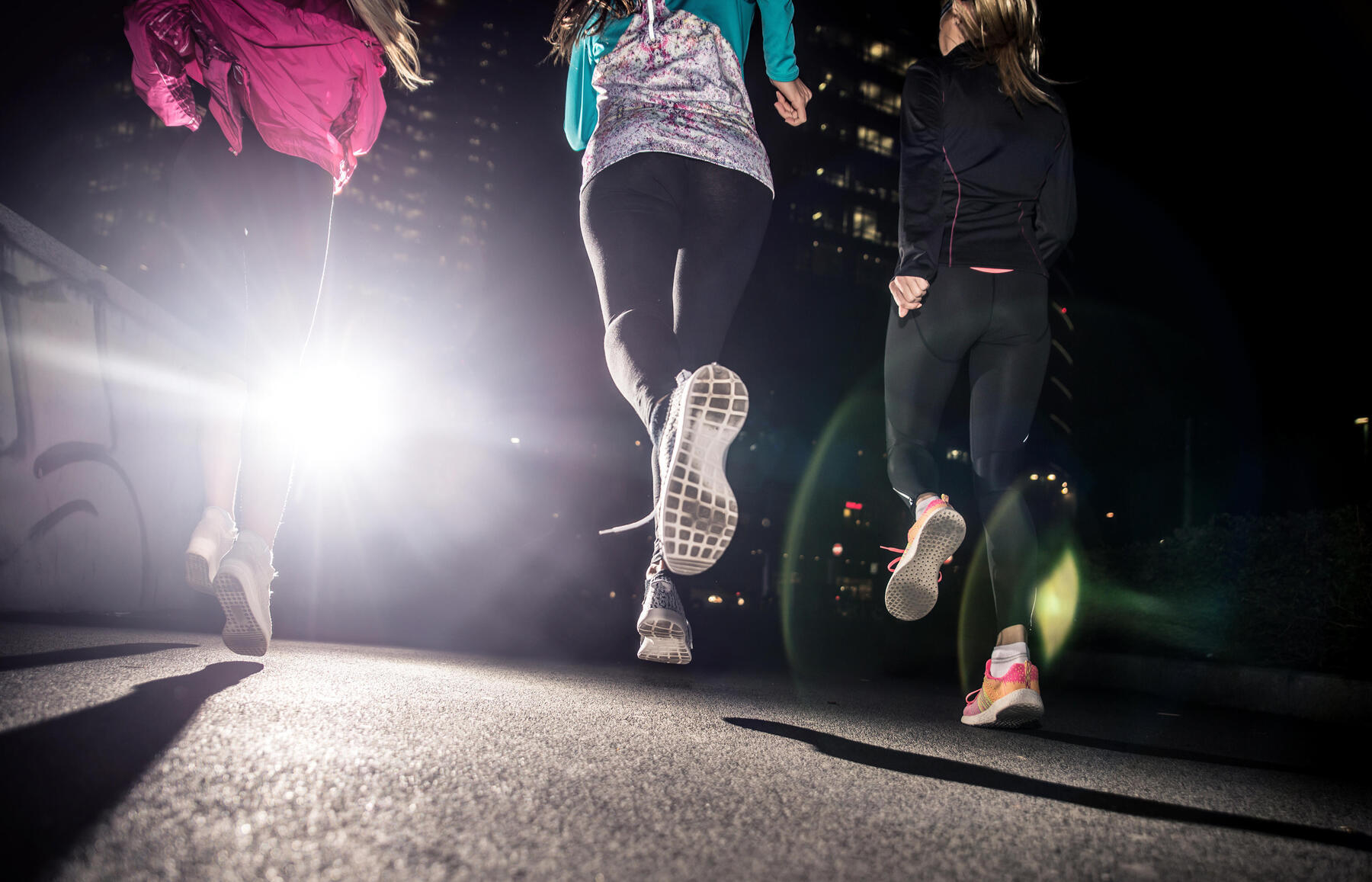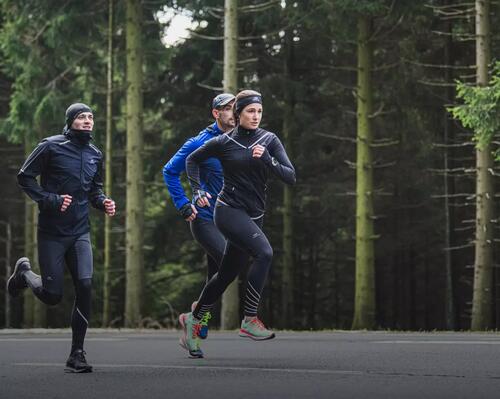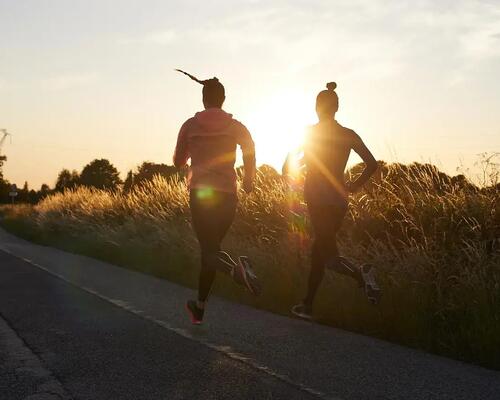When running at night, it's best to know where you're going. Try going with a friend for your first few times, and practice with smaller distances before committing to long runs or a timed race.
Pro tips:
- Take it gradually, starting with a short route you know well. This way, the terrain will be familiar, even in the dark, and you'll be aware of possible shelters along the route if you need them.
- Make sure to check the weather before heading out. During races, organizers will usually make sure to keep competitors informed. It's best to cancel a run if heavy rain or snow is in the forecast. If you're new to running, you should also avoid heading out when temperatures drop below zero.
- Keep your strides shorter than normal to avoid slipping. Keep your eyes focused on your path and your immediate surroundings. Be sure to check regularly that you're not approaching any sudden or unexpected changes in terrain. It's best to slow down on slippery or muddy ground.





